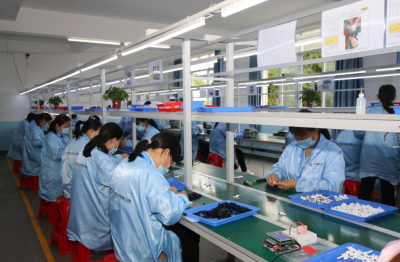🔧 Powering Precision The Ultimate Guide to Hysteresis Brakes Dynamometers and Advanced Motor Testing Solutions 🔧

In the fast-paced world of industrial innovation, precision and reliability are non-negotiable. Whether you’re designing cutting-edge electric vehicles, optimizing aerospace systems, or perfecting consumer electronics, the tools you use to test and validate performance can make or break your success. Enter hysteresis brakes, dynamometers, clutches, and motor testing systems—technologies that have quietly revolutionized how industries measure, control, and refine mechanical power. Let’s dive into why these solutions are indispensable in modern engineering.
---

**Hysteresis Brakes: Silent Guardians of Control 🛑**
Hysteresis brakes are the unsung heroes of motion control. Unlike traditional friction brakes, they operate without physical contact, using magnetic fields to generate torque. This unique principle eliminates wear and tear, ensuring consistent performance over thousands of cycles. Imagine a robotics assembly line where delicate components require precise tension control—hysteresis brakes deliver smooth, maintenance-free operation, reducing downtime and costs.
Applications range from medical devices (think MRI machines requiring vibration-free environments) to renewable energy systems, where wind turbine pitch control demands reliability in harsh conditions. With zero backlash and instant response, hysteresis brakes are the go-to for engineers who refuse to compromise on accuracy.
---
**Hysteresis Dynamometers: Measuring Excellence 📊**
When it comes to testing motors, turbines, or gearboxes, hysteresis dynamometers stand out for their versatility. These devices measure torque and speed with exceptional accuracy, even at ultra-low RPMs. How? By leveraging the same non-contact hysteresis principle, they provide load simulation without inertia or mechanical losses skewing results.
Picture an electric vehicle manufacturer validating a new motor design. A hysteresis dynamometer can replicate real-world conditions—hill climbs, sudden accelerations, regenerative braking—all while capturing data down to the millisecond. This enables engineers to fine-tune efficiency, reduce energy waste, and ensure compliance with global standards. Plus, their rugged design handles high-power applications, from drone propellers to industrial pumps, without breaking a sweat.
---
**Hysteresis Clutches: Where Precision Meets Power 🔄**
Hysteresis clutches bridge the gap between mechanical and electromagnetic systems. By controlling slip torque magnetically, they enable smooth engagement and overload protection. Take packaging machinery, for example: a sudden jam could damage gears or motors, but a hysteresis clutch slips harmlessly, preventing costly breakdowns.
These clutches shine in applications requiring precise tension control, such as textile manufacturing or wire winding. Their ability to maintain constant torque regardless of speed fluctuations makes them ideal for industries where consistency is king.
---
**Motor Dynamometers: The Backbone of Innovation ⚡**
Motor testing isn’t just about raw power—it’s about understanding efficiency, thermal behavior, and longevity. Modern motor dynamometers integrate hysteresis braking with advanced sensors and software, offering a 360-degree view of performance. Whether testing EV traction motors or HVAC fans, these systems simulate real-world stresses, from extreme temperatures to variable loads.
A standout feature? Regenerative dynamometers, which feed energy back into the grid during testing. This not only slashes operational costs but aligns with sustainability goals—a win-win for eco-conscious manufacturers.
---
**Motor Test Equipment: Smarter, Faster, Stronger 🧠**
Today’s motor test systems are more than hardware; they’re intelligent ecosystems. Imagine a cloud-connected setup where AI algorithms analyze terabytes of data to predict motor lifespan or identify design flaws. Automated test sequences run 24/7, while customizable dashboards let teams collaborate globally in real time.
From startups prototyping IoT devices to giants scaling EV production, modular test equipment adapts to diverse needs. Plug-and-play interfaces, coupled with hysteresis-based load modules, ensure seamless integration into existing workflows.
---
**Building Tomorrow’s Motor Test Systems 🌐**
The future of motor test ing lies in interoperability and scalability. Hybrid systems combining hysteresis dynamometers with eddy current or powder brakes offer unmatched flexibility. Add IoT connectivity, and you’ve got a network of test rigs sharing insights across continents, accelerating R\u0026D cycles.
Consider the rise of autonomous vehicles: their complex drivetrains demand testing under countless scenarios. Advanced motor test systems replicate everything from icy roads to stop-and-go traffic, ensuring safety and performance long before prototypes hit the road.
---
**Why Choose Hysteresis-Driven Solutions? ✅**
1. **Durability**: No contact means no wear.
2. **Precision**: Sub-millisecond response times.
3. **Sustainability**: Energy-efficient designs reduce carbon footprints.
4. **Adaptability**: Scalable for low-power labs or megawatt-scale installations.
---
**Final Thoughts: Engineering Excellence Starts Here 🚀**
In a world racing toward electrification and automation, hysteresis brakes, clutches, and dynamometers are more than tools—they’re enablers of progress. Paired with smart motor test systems, they empower engineers to push boundaries, innovate fearlessly, and deliver products that redefine what’s possible.
Ready to transform your testing strategy? The future of precision is here, and it’s magnetic.
